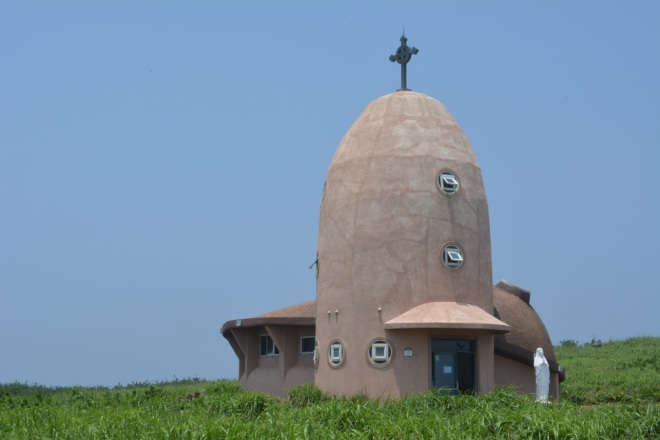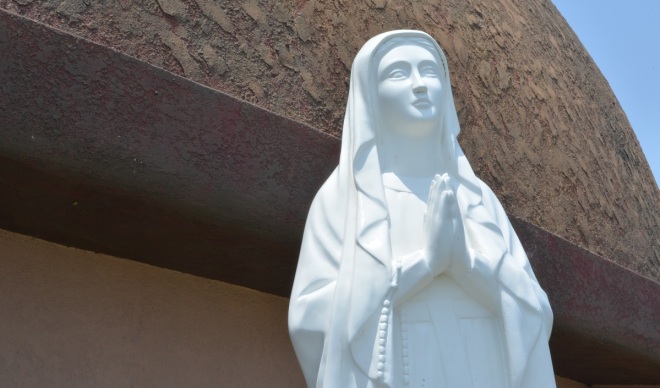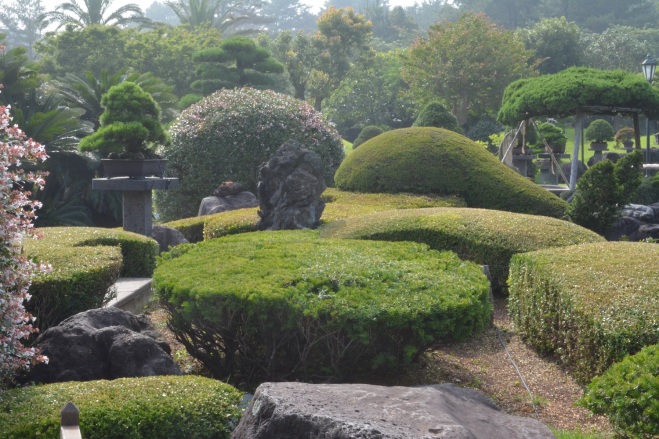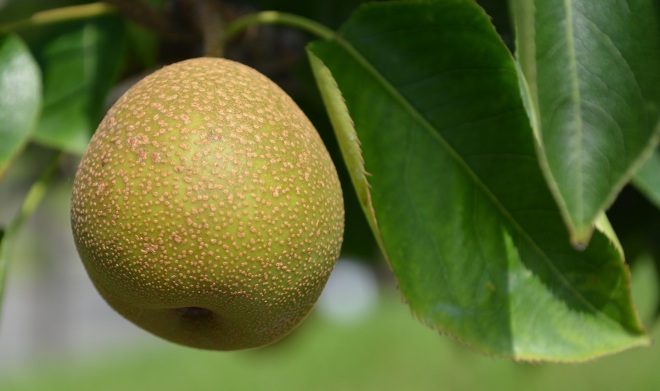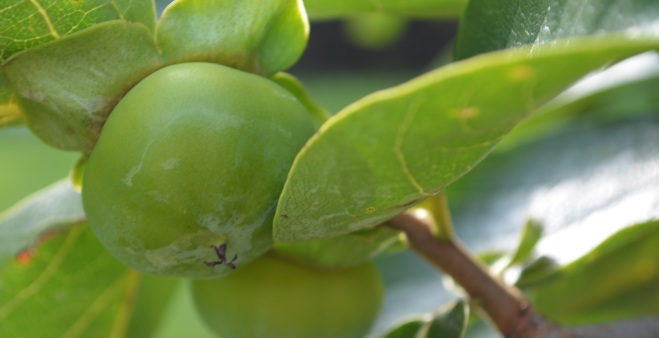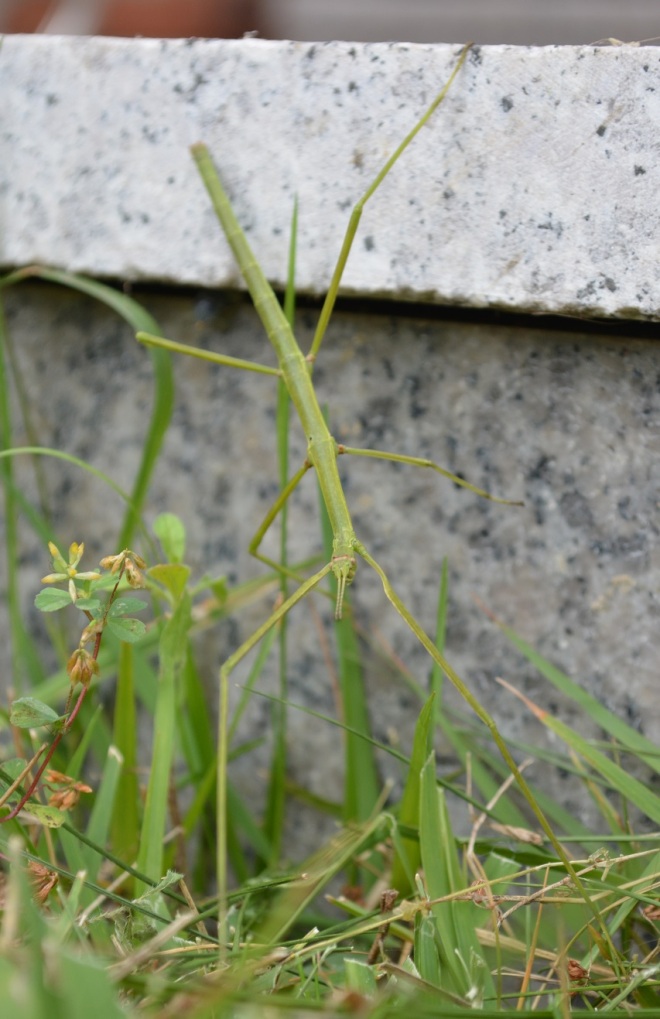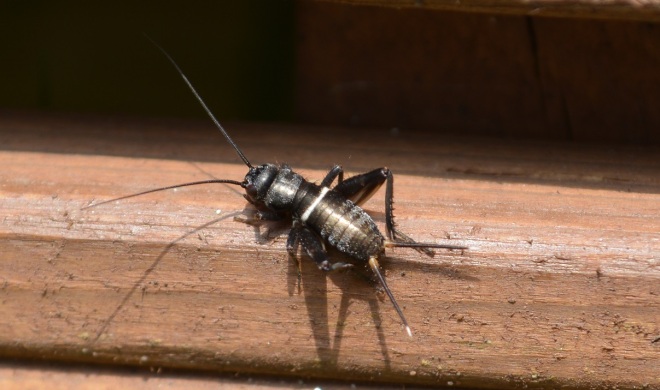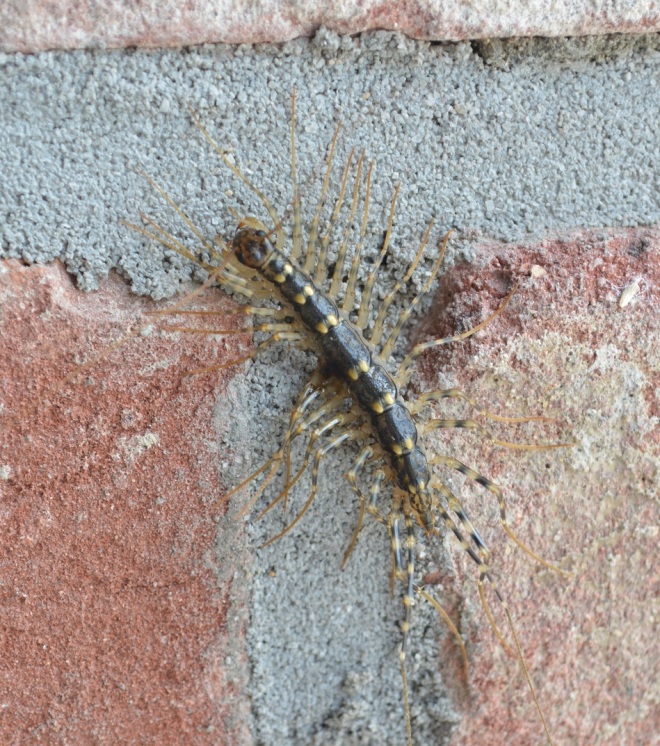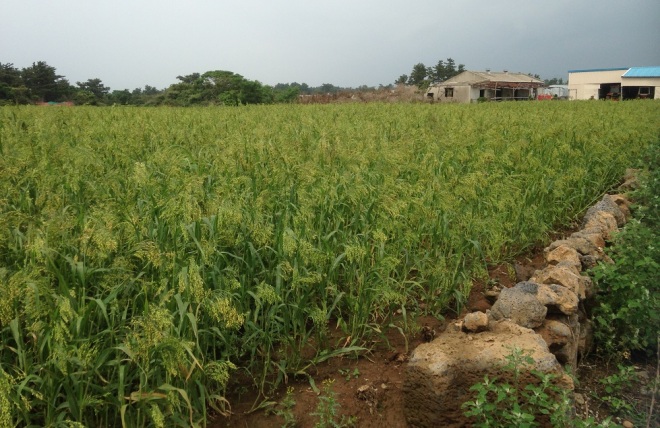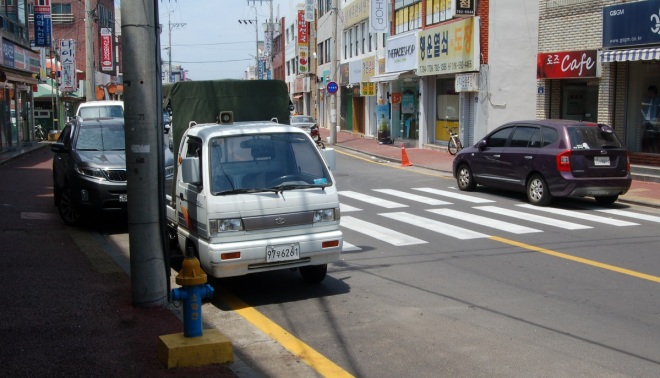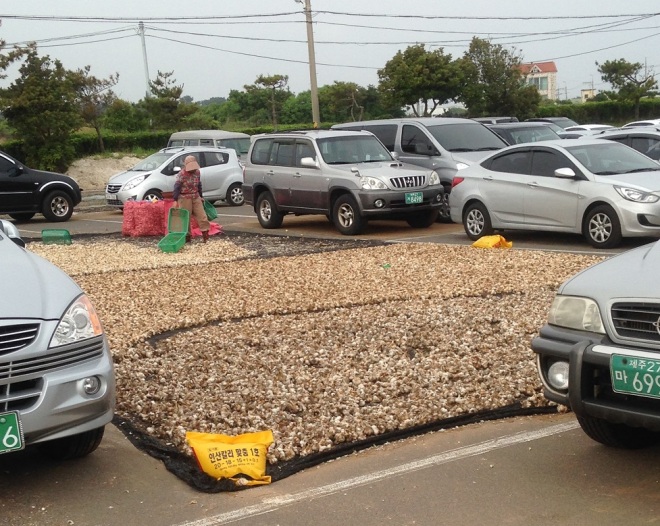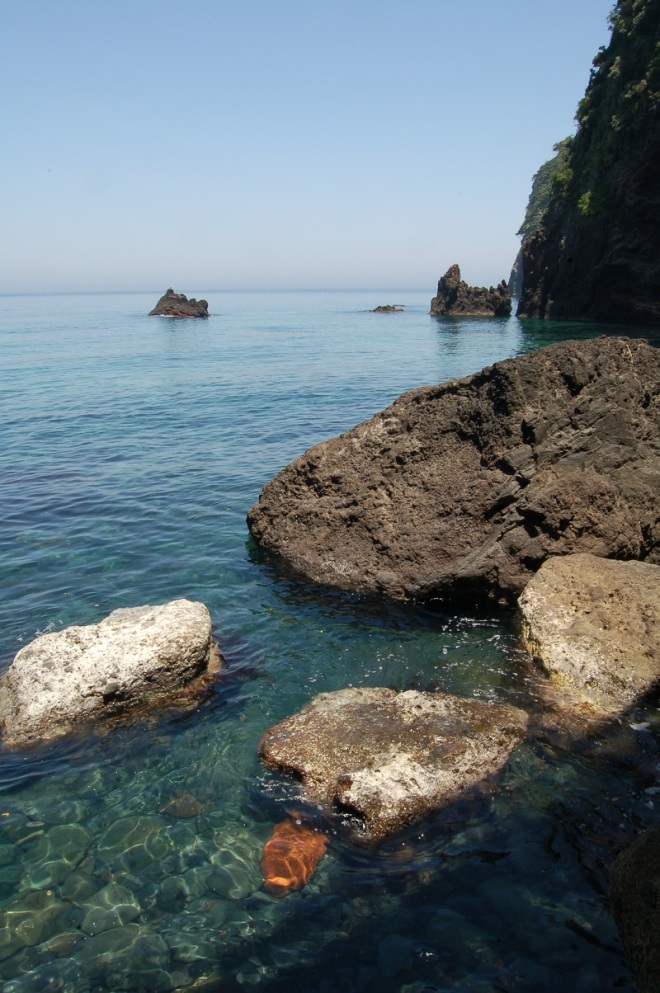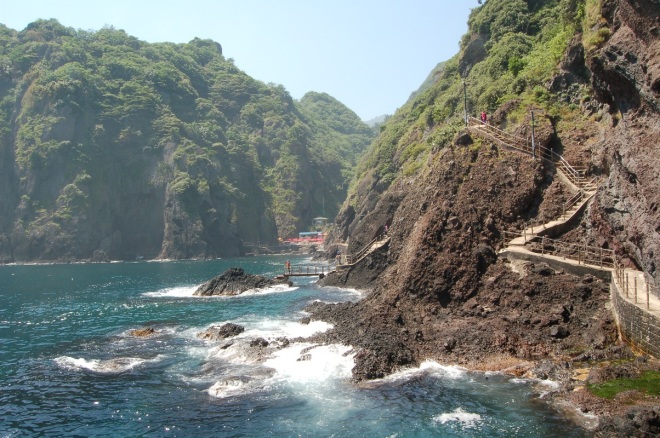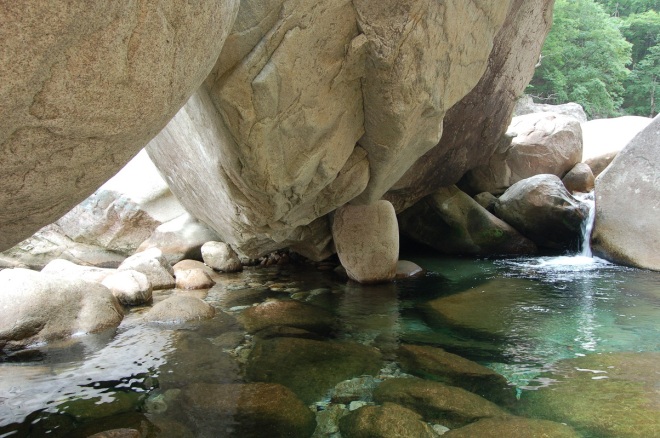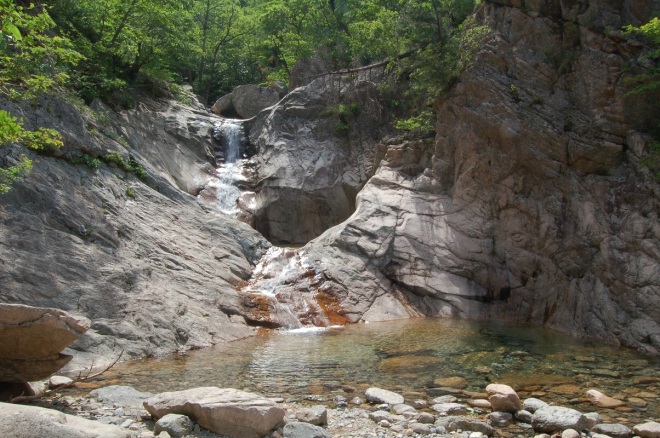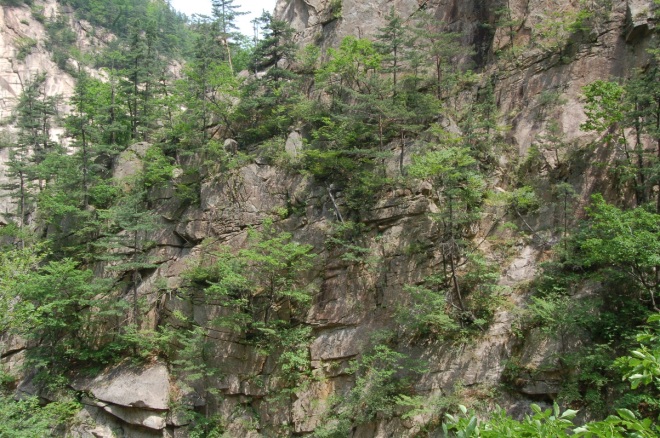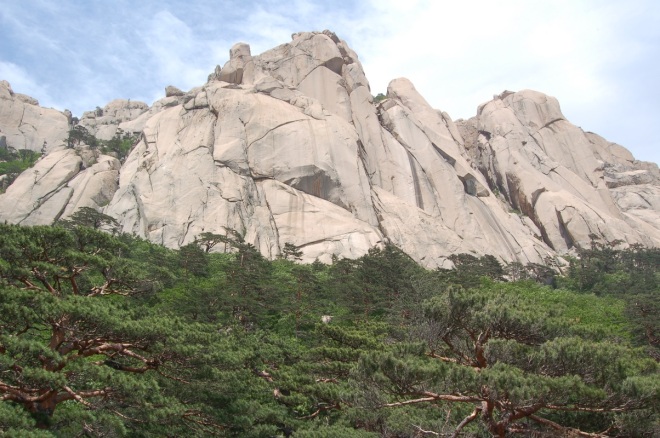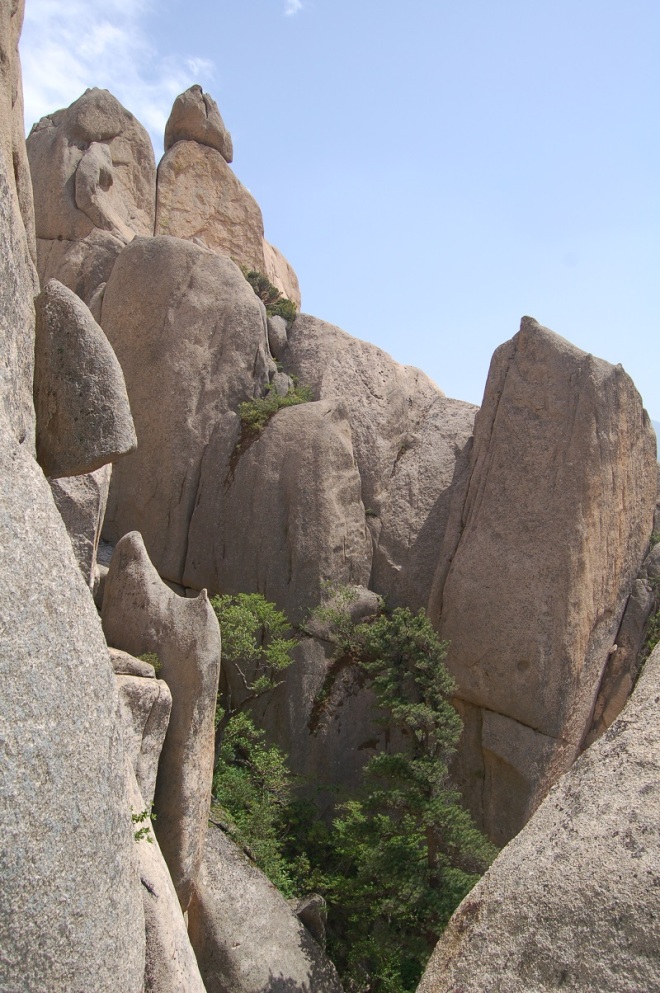This is the Catholic church on Marado, South Korea’s most southerly island, quite different from any other building on the island and looking as if it is growing out of the landscape. It’s a surprising structure on an island with such a small number of residents. Indeed, most of the buildings are seafood restaurants catering to the boatloads of visitors who make the boat trip to the island each day.
Month: June 2014
People who love trees
This is the Spirited Garden in Jeoji, dedicated to all people who love trees. The photos here don’t really give an accurate picture of the place: you can’t tell that the pear, quince and persimmon fruit in the photos below are growing on bonsai trees.
The garden was started in 1968 by Sung Bum Young, who came to Jeju from mainland Korea and began the long-term task of transforming some wasteland on this part of the island. The result of his labour of love was finally opened to the public in 1992.
It would be easy to be cynical about some of the unlikely science, philosophy and aesthetics that notices around the garden ascribe to the art of bonsai, and to the somewhat hubristic claims of how man is improving on nature, but there is something satisfying about the garden and it really is an interesting and relaxing place.
Bugs in the grass
It must be summer – my little garden is alive with little creatures, which I disturbed when I cut the grass today – spiders, grasshoppers, beetles, ladybirds, etc., and here are three of them. That’s the first stick insect I’ve seen in Jeju in the photo above, but there are plenty of the centipedes like the one in the photo at the bottom and their presence encourages me to keep my shoes on.
Fields of green
Jeju is said to have an abundance of three things: rocks, women and wind. The first two refer to the volcanic rock that’s everywhere and to the women who work the fields and dive for fish. Jeju men are reputed to be lazy and it’s common to see teams of women toiling in the fields.
It can be windy here and there’s a Jeju photographer, the late Kim Young Gap, who captured the effects of the wind by using slow shutter speeds for his landscape photos. The blurred images of grasses and branches in the photos testify to the wind playing across the landscape.
I haven’t tried to emulate Kim Young Gap in these photos – I took them with my iPhone, after all. I think the crop is millet, which I spotted as I headed to the west coast on my bike last weekend, and I enjoyed the combination of the golden green of the crop and the darkness of the earth and the rocks.
The rules are different here…
I’m not sure that any text is necessary for this post, certainly not for readers in the UK. I’ve been meaning to post on this subject for a while and could have taken equivalent pictures multiple times. Anyway, I took these in Museulpo this morning in the space of five minutes. You just have to smile.
If you’re reading this in South Korea, I’m sorry for the little tease. Alternatively, if this looks like a random post about nothing in particular, let me know and I’ll explain.
19th Jeju Marathon Festival
Organisers of running races have many problems to overcome, I’m sure, but this one must be unique to Jeju: I pulled in to the car park to find large areas covered with drying garlic. There was some lively debate in Korean between race officials and the ladies looking after the garlic and it was being cleared away by the time I left. That missed the point somewhat, I assume.
Anyway, the race followed the coast on the north-eastern part of the island. Korean runners are very welcoming; it was an out-and-back course and there were plenty of calls of ‘hwaiting’ (derived from the English ‘fighting’, a form of encouragement) from runners on the out half as I was coming back. The race attracted an international field and I even got a ‘ganbare’ (hang in there) from one of the Japanese contingent.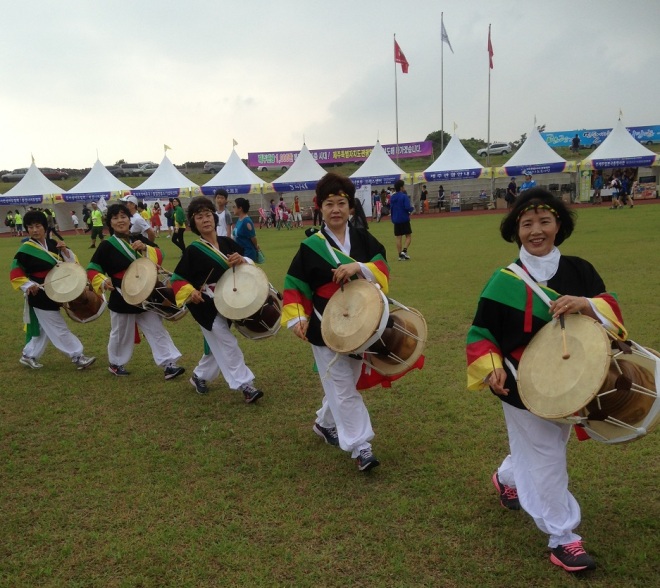
Ulleungdo
Located 135km east of the Korean peninsular, and two-thirds of the way to the disputed islands of Dokdo/Takeshima (depending on your point of view), is Ulleungdo. It’s the top of a volcano and is a rugged, tree covered landscape with communities tucked into flatter areas on the coast.
The boat from Gangneung on the coast of Gangwon Province takes around three hours to get to Ulleungdo and arrives in the little port of Jeodong-ri. From there, a path to the neighbouring community of Dodong-ri hugs the bottom of the cliffs. Much of it is man-made, with bridges spanning stretches of open sea, and there’s a spiral staircase at one point that takes you from just above sea level to the top of the cliffs for a higher-level section of the route.
Gates have been placed that can close the path if the sea conditions make it unsafe but there was no danger of this on Friday; instead, more turquoise seas gently lapped the rocks under a clear blue sky. What were you doing on Friday?
Seoraksan
The highest point in Seoraksan National Park is Daecheongbong, 1708 metres, the third highest peak in South Korea. It’s a long hike from the eastern entrance to the park, and it’s traditional for people to stay overnight at one of the shelters one the approach to the peak so that they can be at the summit for sunrise.
We didn’t attempt to get to the top, but the trail on the lower slopes is quite special. The most direct approach follows a river, set at the bottom of a steep-sided valley, with rock faces towering above. Huge chunks of rock have fallen over time and lie at the bottom of the cliffs. The route is only made possible in many places by the addition of long flights of steps and bridges.
Ulsan Bawi
One of the highlights of Gangwon Province is Seoraksan National Park, full of forested hills and high rocky outcrops. This is Ulsan Bawi, not far from the eastern entrance to the park and, with the summit at 873 metres, a demanding climb. Once you’re above the trees there’s a long series of stairs up to the top. The photos give no indication about how windy it was on Tuesday; at the summit, people were crouching or sitting in the gusts, or hanging on to the railings to have their photo taken next to the Korean flag.

